
20 Ways to Engage with your Customers using Post-Purchase Emails
Check out this article for 20 surefire ways to engage with your customers using personalized post-purchase emails.
Boost customer experience and reduce support tickets
Realtime order and shipment tracking
Proactive order and shipping notifications
Predictive pre-purchase estimated delivery dates
Self-Serivce branded order tracking
Effortless experience delivered
Make returns profitable and delight customers
Flexibility to define any return destinations & conditions
Simplify returns for your customers and team
Incentivize exchanges over returns
Returns management made easy for your team
Understand why your customers are returning
Unify the online and the in-store experience
Hassle-free pickup experience for customers
In-Store Dashboard to keep operations streamlined
In-Store and Online orders unified
Drive foot-traffic to your stores
Boost customer experience and reduce support tickets
Realtime order and shipment tracking
Proactive order and shipping notifications
Predictive pre-purchase estimated delivery dates
Self-Serivce branded order tracking
Effortless experience delivered
Make returns profitable and delight customers
Flexibility to define any return destinations & conditions
Simplify returns for your customers and team
Incentivize exchanges over returns
Returns management made easy for your team
Understand why your customers are returning
Unify the online and the in-store experience
Hassle-free pickup experience for customers
In-Store Dashboard to keep operations streamlined
In-Store and Online orders unified
Drive foot-traffic to your stores
Find the answer to all your questions
Explore the most comon questions about WeSupply
Calculate the ROI that WeSupply can bring you
Request a no strings attached review of your current shopping experience and missed conversion opportunities
Take a step by step trip through our functionality to see how we can improve your ecommerce processes.
Read actionable articles on how to optimize your post-purchase experience and decrease support tickets
Get inspired by stories of how our customers implemented an effortless post-purchase experience
A Deep Dive into Top Companies' Order Tracking & Returns Strategy
Wondering if WeSupply is a good fit for you? Read through our use cases to see how we can help you increase conversion & improve CX!
We discuss six ways you can use post-purchase techniques to delight new customers into becoming true brand enthusiasts. Learn what modern shoppers are looking for in a digital experience during the pandemic, and stay ahead of today’s rapidly changing retail landscape!

You probably don’t need us to tell you that COVID-19 has dramatically affected retail, specifically ecommerce. Pandemic fears have shifted customer behavior away from local stores and toward omnichannel and online shopping in a major way. Some experts are even calling digital the new flagship for brands.
How major is the shift? 52% of surveyed customers say they’d shop primarily online even after the lockdown (Future Commerce). Brands already investing heavily into their digital presence have come out on top while many smaller businesses fear getting left behind. It doesn’t have to be that way!
Even as a small business, it’s likely you’ve been seeing a bump in online sales over the past months. The good news – 88% of global consumers say they plan to stick with new brands they discovered during lockdown (BazaarVoice). This means the extra sales may be temporary for lazy retailers, but not for brands who optimize their customer journey.
Building brand loyalty with lockdown shoppers will undoubtedly be the dividing factor between 2020’s biggest success stories and everyone else. However, you may need to shift your immediate focus from conversion to retention. We’ve put together six ways you can leverage your post-purchase experience to do just that. Read on to learn how to turn a one-off pandemic purchase into customer loyalty that will extend well beyond COVID-19.
The pandemic has more eyes than ever on your site, but supply chain issues caused by that very same virus are making it impossible to fill orders. Talk about a catch 22. Unfortunately, this is 2020’s reality for even the best prepared brands. Practicing a little adaptability can go a long way toward rescuing countless customer journeys from an early demise. Let’s take a look at a few common problems.
In this case you could offer customers the option to sign up for restock notifications. This will be especially helpful for products that are sold out elsewhere as well. While this isn’t a guaranteed sale, it ends the customer journey on a positive note. In other words, you didn’t waste their time.

Another way to take control of the situation would be to offer a “buy now, ship later” option. You can do this by tweaking estimated delivery dates for specific products based on their predicted availability. We’ll be talking about those again soon in this article, but the biggest takeaway for now is to be totally transparent. Keeping your customer informed before the purchase and updated about any additional delays is the heart and soul of what makes this technique so effective in the first place.
Those solutions are great when you know there’s going to be a restock, but how can you save the day when you know there won’t be anymore coming? Try recommending intelligent, thoughtful product alternatives. This is a true test of knowledge about your customers’ needs and specific products. Understanding your customers and offering elements of personalization will pay off in the long run (decreasing bounce rate by 45% according to BigCommerce).
Ideally you’d like to be able to ship all the items in one box, from one place, but that may be impossible with current pandemic scarcities. A common (and inefficient) solution to this problem was to ship all the items to your main warehouse, combine them, and ship that box to the customer. In practice this presents a terrible experience for the user who is now forced to wait longer for their stuff.
A better idea is to offer split shipments. Each item ships directly from its current location to the customer. You can communicate this clearly in the customer portal, providing them with multiple tracking numbers and separate ETA’s. This also allows you a whole new level of flexibility, as you can ship out the items that are ready while waiting on any that may be backordered.
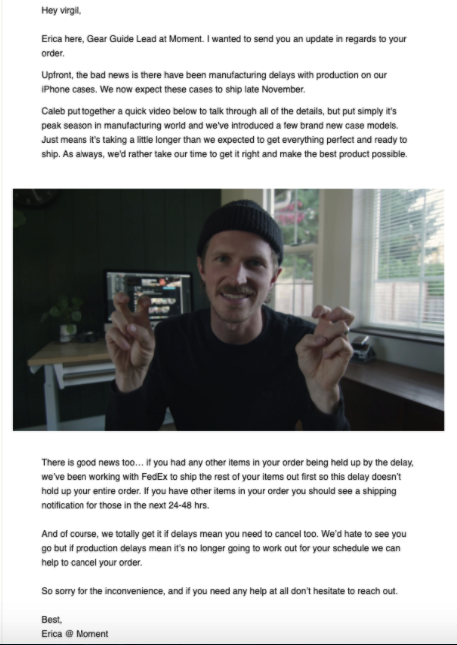
With unexpected curveballs like this it’s also a good practice to make it easy for customers to cancel orders. We can almost hear the old school CEOs groaning from here, but hear us out. Sure we want to minimize cancellations, but we want to achieve this through up-front, honest communications. We don’t want to achieve it through trickery or making a customer feel “stuck.”
The solutions to both of these problems certainly share some common themes. Customers are looking for options, clarity, proactive communication and ultimately, trust when they choose which brands to shop with. With a little creative thinking you can turn an out of stock into a loyalty building milestone!
There’s no way to avoid the elephant in the room – Amazon has transformed the ecommerce space. Aside from their large infrastructure, they built their high market share on simple psychological tactics. This includes educating customers about when to expect items, and sending proactive notifications ahead of any issues. Because of this, your customers flat out expect to see Estimated Delivery Dates and won’t tolerate any mystery.
Customers simply prefer to purchase from retailers who can tell them exactly when they’ll get their package. Amazon has set the bar high, putting new, older ecommerce customers at ease right from the start with accurate delivery dates. Data shows that 35% of all lockdown purchases in the United Kingdom were with Amazon. The most surprising part is that over ⅕th of these surveyed shoppers said they’d buy again (EConsultancy).
Estimated Delivery Dates were already a product page best practice, but they’re more important in the COVID 19 ecommerce landscape. After all, loyalty starts with getting the customer to buy from you in the first place. It’s critical to start the customer experience off strong considering the 12.2% growth in new online shoppers aged 65+ (eMarketer). Members of this group were adverse to buying online before the lockdown, and they may still be hesitant.
Estimated Delivery Dates are also helpful in relaying any pandemic related supply chain issues you may be experiencing. You can find average end-to-end times for specific products by looking at aggregate data of past orders. Products that are expected to take longer can be marked accordingly without sacrificing items with wider availability.
It’s true that customers expect delays as they rapidly adapt to these unprecedented times. The important part is that they’re communicated as early as possible – don’t wait till the checkout page!
The solutions to both of these problems certainly share some common themes. Customers are looking for options, clarity, proactive communication and ultimately, trust when they choose which brands to shop with. With a little creative thinking you can turn an out of stock into a loyalty building milestone!
Whether you’re shipping with FedEx, UPS, or USPS, delayed deliveries are a major side effect of COVID-19. The current Postmaster, Louis DeJoy, told a US Senate Committee the virus was the root cause of these issues. He added that the availability of Postal Service employees has dropped 4% on average, and up to 25% in urban areas! Unfortunately, customers are more likely to hold your brand accountable for these delivery delays.
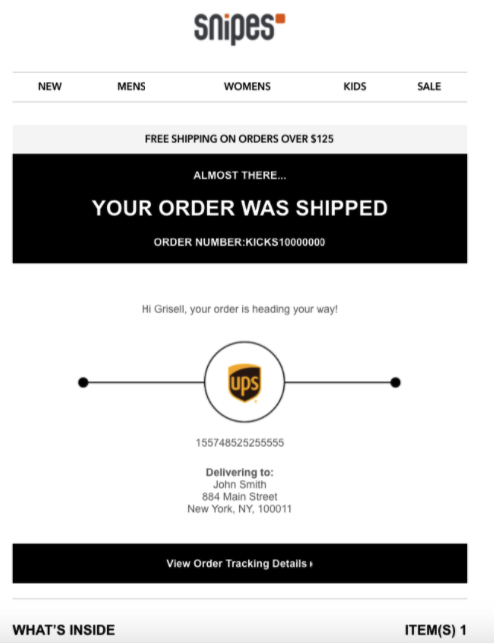
You may not be able to control the performance of your carrier, but you can change your approach. Ecommerce order tracking has evolved, and customers expect proactive SMS/email notifications about their shipments. This allows you to get ahead of any unforeseen issues ahead of time to put customers at ease. 83% of shoppers surveyed before the pandemic said they expected follow up notifications from retailers, and the importance is rising.
It’s also important to provide customers with a detailed tracking page that contains information about their purchase and shipment. Ideally this will be fully branded, giving you the chance to educate the customer as well as upsell and cross sell. A well built tracking page will empower customers to handle simple issues on their own. Couple this with a good support team for complicated problems, and you have a winning formula for creating positive touchpoints.
Remember, think beyond the tracking number!
Generally speaking, self-service returns have always been the centerpiece of a solid post-purchase experience, but now they’re essential. Mass shipping delays for inbound and outgoing packages have customer service teams getting absolutely flooded with calls. Hearing back, or even reaching them in the first place, is becoming increasingly rare. This is a problem for big and small brands alike who thrive by turning the returns process into a positive touchpoint.
While many sites are stuck with posted notes warning of delayed response time, others chose to optimize early. The ones who streamlined their processes for customers have benefitted big during the pandemic, but it’s better late than never. The bottom line is that online retailers need to seriously reconsider how they support customers and allocate their limited resources.

As more customers turn toward shopping online, you have to be able to recreate the in-store experience digitally. Customers who plan on purchasing multiple variations of a product to get the perfect fit are going to choose a brand with easy returns. Customers who prefer making their returns in person, for speed or convenience, will opt for a brand providing those options.
It goes deeper than missing out on niche customers though. Shipping delays can be exacerbated without a solid returns flow due to poor receiving practices. As packages trickle in late you can expect a confused staff and cluttered warehouse. A good self-service process will allow each returned package to be easily traced back and dealt with.
It’s also important to be flexible and up front with customers. Brands like Zara, UNIQLO, and Nike have updated their knowledge bases to explain tweaks in the policy and potential delays in shipping. For example, Zara has extended their return policy to 30 days after stores reopen. While they usually aren’t this generous, this change will mitigate pre-purchase anxiety and boost retention.
Honesty and flexibility are the two biggest takeaways that will be most remembered by shoppers in the long term.
Did you know that BJ’s Wholesale experienced 300% year over year digital growth thanks to BOPIS efforts (Digital Commerce360)? The number sure is staggering, but it makes sense when you think about it. COVID-19 and the subsequent lockdown have seriously altered customer perception. They want to avoid interactions in public spaces, especially long lines to enter stores or make a purchase.
So began the accelerated adoption of BOPIS, or pick up curbside. While lockdown restrictions may have gotten the ball rolling on this initiative, it won’t be going away anytime soon. In fact, retailers are beginning to take the concept to new levels by offering consumers more choices.
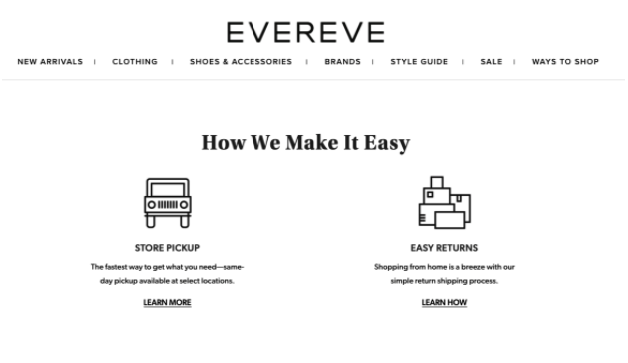
Theoretically it should be easy to make these additions, but the big challenge comes from internal process and tech. Trying to improvise and work around a system that was not meant to accommodate these features can be a nightmare. We’re talking confused store staff, order inaccuracies, long wait times, and mostly a sub-optimal experience for the customer.
Empower shoppers to handle everything in their customer portal. By offering digital receipts and allowing users easy selection when returning an item, you’re creating an effortless experience. You can also let them know when their order is ready for pickup to avoid long wait times.
Implementing a good backend system is important because the caveat to these initiatives is that they actually have to work! Monica Eaton-Cardone sums this up in her May 2020 article for Forbes. “Contemporary shoppers have little patience for apps and other digital offerings that are prone to lagging, crashes, and other errors.”
Most of the time customer service gets a bad rap because of the “numbers game” brands have been running for years. You know the one, where success is rated on how fast they got you off the phone so they could move on to the next caller. Not only is this ineffective, but it’s incredibly tone deaf. Customers are craving the human touch more than ever in our increasingly isolated world.
At the root of it all, customers miss going to shops and seeing a familiar staff. A team who knew their preferences, could offer opinions, and made them feel taken care of. This human touch can be lost in translation as the digital experience becomes more common. But how do you actually personalize service from afar?
First, treat the cx team like the superstars they are. They aren’t just “problem solvers,” but more like the essential frontline workers of your brand. Equip them for success with expert customer and product knowledge, as 46% of shoppers say this is important to them (HubSpot). Emotionally charged conversations are par for the course, so agents need to be sharp with soft skills and emotional intelligence.
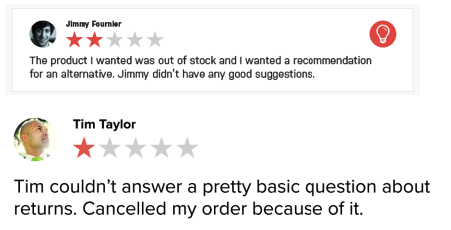
Practice personal customer service by asking about previous purchases and issues. Today’s customers are looking for advocacy, and agents should be on their side. Listening, empathizing, and offering real human solutions. Creating these deep connections, clear communication, and swift conflict resolution are your tickets to loyalty.
78% of industry experts say it’s important to deliver a “robust and varied customer experience” in order to drive revenue (Retail Rebirth 2020). However, it’s important to remember that what’s a “nice touch” today will be essential tomorrow. Brands who drag their heels on this initiative will spend more in the long term as most of the great customer service professionals are nabbed up. Basically, don’t get caught playing catchup when bad experiences are no longer tolerated and good ones are simply “the norm.”
Studies have shown that Gen Z and Millennials are optimistic about their financial futures, but are undeniably downtrodden in the present. Brands who contribute more anxiety are going to be left by the wayside as the ones who make their lives easier rise to the top.
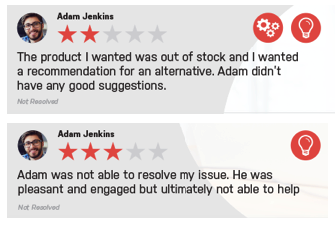
Let’s take a quick look at what we’ve learned:
Conclusion
The pandemic may not last forever, but habits learned during this time will be sticking around for a long time. Lockdown conditions sped up omnichannel and digital adoption even for the most hesitant retailers, with more brands stepping up to the plate.
Take advantage of the extra traffic now, because customers will only be continuing relationships with brands who delight them and make their lives easier.
It’s now become apparent that investing in your digital customer experience isn’t a novelty, but the true determining factor between brands who will succeed and those who won’t.
Take advantage of the extra traffic now, because customers will only be continuing relationships with brands who delight them and make their lives easier.
It’s now become apparent that investing in your digital customer experience isn’t a novelty, but the true determining factor between brands who will succeed and those who won’t.
Learn How To Create Successful Post Purchase Email Campaigns
Build an effective post-purchase email flow that helps you increase customer satisfaction and drive revenue growth!

Check out this article for 20 surefire ways to engage with your customers using personalized post-purchase emails.

Running to Adobe Summit with Brent Peterson from Wagento Did you know Wagento built the Selena Gomez website? Checkout what Brent has to say about

How to use pre & post purchase transparency to drive more conversion & build customer retention this holiday season!

Introduction to Post-Purchase Experience Date: Friday, October 25th, 2019 Time: 8:00am PST / 11:00am EST Get a Free Demo What: This is the first general interest
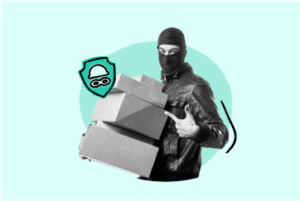
Don’t let porch pirates steal your thunder during the holiday season!
Here are four ways you can help fight package theft for your customers!

Four easy-to-implement optimizations that will reduce the workload for your customer service department this holiday season!

In eCommerce, holidays are a hit or miss. We take a look at the five biggest issues threatening to derail your busy season & how we can help!

We put together this holiday eCommerce website checklist to help you prepare for the upcoming season. This checklist gathers all the seasonal best practices that are also the recipe for year-round optimization and success!

How Do Consumers Reduce Post Purchase Dissonance? These six best practices will help you increase customer retention by lessening the chances of post purchase dissonance.